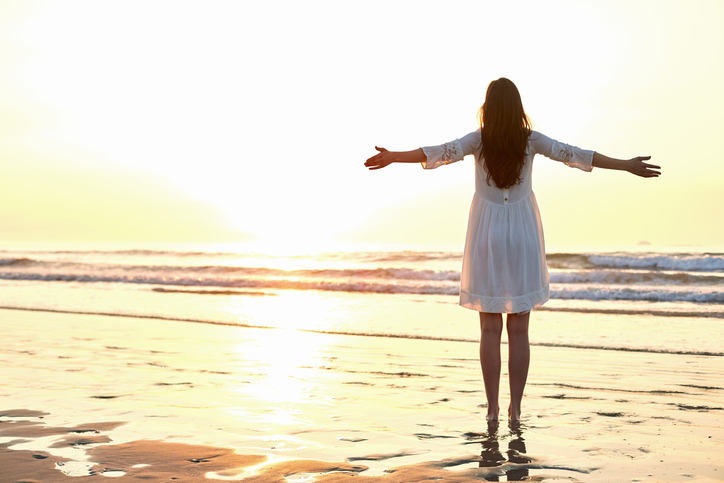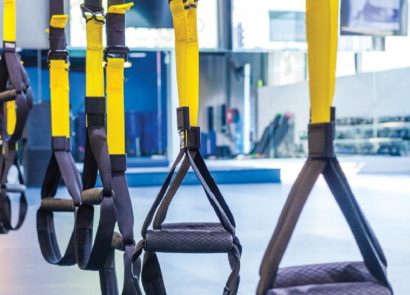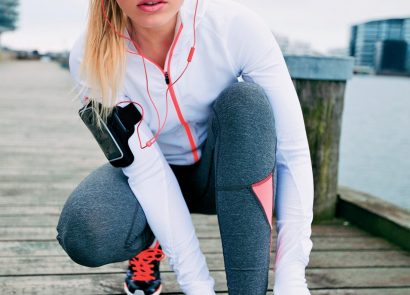What is grounding?
Ever enjoyed the soothing feeling of walking bare foot across grass or the sensation of sand between your toes at a beach? Turns out there’s good reason for why these experiences are so calming and restorative. Grounding is the act of putting your body in direct contact with the earth, whether this be through soil, sand or water and, as a result, returning it to a neutral state. Picture the earth as a gigantic battery with a subtle negative charge, while humans, on the other hand, build up a positive charge through the stresses of daily life. The direct connection of skin to earth balances these out and restores the body. “Just like mindfulness practice, grounding can be used as a tool for focusing your mind into the present moment,” explains David James Lees and Alexandra Lees, co-founders of Wu Wei Wisdom. “When physical, emotional and mental exertion pushes your energy levels out of balance, you can use grounding to stimulate and rebalance your flow of Qi (chi) energy. It also heightens your awareness of the world around you. There is a Chinese proverb that says ‘we are part of nature, nature is part of us’ – understanding that you are intrinsically part of and at one with something greater than you is the essence of all grounding practices.”
Additionally, in Ayurveda and yoga it has been widely propagated to walk bare foot even for health and wellbeing reasons. “As a part of Vedic philosophy, it has been a tradition to visit temples and holy places bare foot,” says Dr Deepa Apte, founder of Ayurveda Pura. “This wasn’t just for reasons of cleanliness but also gave the individual to become one with mother earth. In other words, to be able to connect and feel grounded from within. According to Ayurveda anything and everything is made up of five elements.”
1. Space
2. Air
3. Fire
4. Water
5. Earth
“Likewise these five elements are divided into our five fingers”
1. Space – thumb
2. Air – index finger
3. Fire – middle finger
4. Water – ring finger
5. Earth – little finger
“The above being one of the main reasons we eat with our hands in India, so that when we mix food, we are using all the five elements via our five fingers to help nourish the foods.Likewise, these five elements are divided into our five toes.”
1. Big – space
2. Second toe – air
3. Third toe – fire
4. Fourth toe – water
5. Fifth toe – earth
“When we walk bare foot, we absorb these five elements via these toes from earth. Hence a nourishing effect on the whole body,” adds Dr Deepa. “According to Ayurveda, there is an energy channel or Nadi that connects the big toe to the eyes and the brain. Therefore when we walk bare foot, the energies from the earth are absorbed and distributed via this channel to the eyes and especially the brain to keep it alert and active.”
Convinced? Here’s how to practice grounding
“Grounding can be practised outdoors or indoors, standing, sitting or lying down,” explains David and Alexandra. Here, they recommend two ways to get started – you’ll begin to notice the benefits after just 10 minutes of practice a day!
The WU JI grounding exercise
Stand with your back straight, your shoulders relaxed and your arms hanging loosely at your sides with your palms facing towards your rear. Your knees should be slightly bent, feet hip-width apart, with the weight of your body evenly distributed between the heel and the ball of each foot. Pressing the soles of your feet against the ground like this activates a potent healing acupuncture point known as bubbling spring. Now, visualise a stream of flowing energy running from the top of your head down through the centre of your body, out between your legs and into the ground. Stand quietly, breathing deeply through this centreline of energy for five to 10 minutes. If you have difficulty standing, this exercise can also be practised sitting down.
Becoming The Observer grounding exercise
Find a quiet, safe place where you won’t be disturbed for 10-15 minutes. Sit or lie down comfortably, close your eyes if you’d like to, and relax your body. Breathe slowly, deeply and rhythmically. Notice how your breath and body move together and begin to cooperate. Affirm to yourself – I breathe in calm, I breathe out tension. Scan down your entire body and find any areas of tension or discomfort. Visualise breathing warmth and love into these areas so that any resistance dissolves. Now, turn your attention to your surroundings – notice the areas of your body that are touching the fabric of your clothes and the sensations of where you are sitting or lying down. Become acutely aware of the temperature and any sounds or smells in your environment. As you observe and tune into your surroundings, visualise your body, breath and the environment around you melting into one.




















